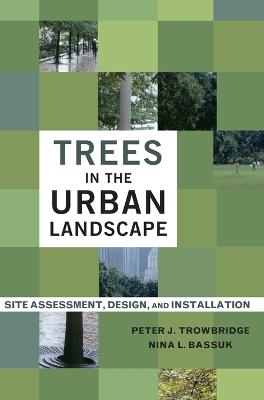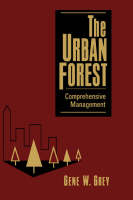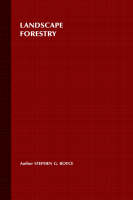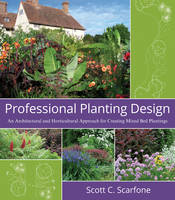Trees in the Urban Landscape
 -15%
portes grátis
-15%
portes grátis
Trees in the Urban Landscape
Site Assessment, Design, and Installation
Trowbridge, Peter J.; Bassuk, Nina L.
John Wiley & Sons Inc
03/2004
232
Dura
Inglês
9780471392460
15 a 20 dias
636
Descrição não disponível.
Preface.
Chapter 1. Doing it Right from the Start: Successful Urban Plant Establishment.
What Went Wrong?
Think Like a Tree: A Rational Process for Successful Plant Establishment.
Back to Basics.
A Process of Plant Establishment.
Right Plant/Right Place/No Place.
Nature or Nurture.
Coming Full Circle.
Reference Cited.
Chapter 2. Site Assessment and Analysis: An Overview.
Above-Grade Factors.
Belowground Factors.
Decision Making Based on Site Assessment.
References Cited.
Chapter 3. Modification of Soils.
Background: Issues for Soil Modification.
Soils Under Pavements: Structural Soils.
Soil Volume Calculations.
Spatial Configuration of the Planting Area.
Surface Treatment over the Rooting Zone.
Ameliorating the Effects of Grade Changes.
Drainage Principles and Techniques.
References Cited.
Chapter 4. Plant Selection.
What Functions Do Plants Serve in the Urban Environment?
How Do We Begin Matching the Plant to the Site?
Current Strategies.
The Case for Visual Uniformity.
The Case for Species Diversity.
A Solution.
Recommended Groups of Visually Compatible Trees.
Selecting and Using a Plant Group.
Additional Recommended Tree Groups.
Reference Cited.
Chapter 5. Transplanting and Initial Care in the Landscape.
Plant Quality and Nursery Production Practices.
Methods of Production and Harvest.
Some Trees Are More Difficult to Transplant Successfully Than Others.
Tree Size.
The Process of Handling and Storage.
Planting Procedure.
References Cited.
Chapter 6. Site Preservation and Management.
Appendix I: Tree and Large Shrub Tolerance of Varying Soil Moisture, Soil pH, and Salt Conditions.
Appendix II: Model Soil Specifications.
Appendix III: Model Landscape/Planting Specification.
Index.
Chapter 1. Doing it Right from the Start: Successful Urban Plant Establishment.
What Went Wrong?
Think Like a Tree: A Rational Process for Successful Plant Establishment.
Back to Basics.
A Process of Plant Establishment.
Right Plant/Right Place/No Place.
Nature or Nurture.
Coming Full Circle.
Reference Cited.
Chapter 2. Site Assessment and Analysis: An Overview.
Above-Grade Factors.
Belowground Factors.
Decision Making Based on Site Assessment.
References Cited.
Chapter 3. Modification of Soils.
Background: Issues for Soil Modification.
Soils Under Pavements: Structural Soils.
Soil Volume Calculations.
Spatial Configuration of the Planting Area.
Surface Treatment over the Rooting Zone.
Ameliorating the Effects of Grade Changes.
Drainage Principles and Techniques.
References Cited.
Chapter 4. Plant Selection.
What Functions Do Plants Serve in the Urban Environment?
How Do We Begin Matching the Plant to the Site?
Current Strategies.
The Case for Visual Uniformity.
The Case for Species Diversity.
A Solution.
Recommended Groups of Visually Compatible Trees.
Selecting and Using a Plant Group.
Additional Recommended Tree Groups.
Reference Cited.
Chapter 5. Transplanting and Initial Care in the Landscape.
Plant Quality and Nursery Production Practices.
Methods of Production and Harvest.
Some Trees Are More Difficult to Transplant Successfully Than Others.
Tree Size.
The Process of Handling and Storage.
Planting Procedure.
References Cited.
Chapter 6. Site Preservation and Management.
Appendix I: Tree and Large Shrub Tolerance of Varying Soil Moisture, Soil pH, and Salt Conditions.
Appendix II: Model Soil Specifications.
Appendix III: Model Landscape/Planting Specification.
Index.
Este título pertence ao(s) assunto(s) indicados(s). Para ver outros títulos clique no assunto desejado.
guide; critical; design; plants; tools; landscape; urban; offers; maintenance; conceptualization; greening; cities; reference; issues; complex; perfect; concepts; essential; exemplify; practice; realworld; studies demonstrate; important
Preface.
Chapter 1. Doing it Right from the Start: Successful Urban Plant Establishment.
What Went Wrong?
Think Like a Tree: A Rational Process for Successful Plant Establishment.
Back to Basics.
A Process of Plant Establishment.
Right Plant/Right Place/No Place.
Nature or Nurture.
Coming Full Circle.
Reference Cited.
Chapter 2. Site Assessment and Analysis: An Overview.
Above-Grade Factors.
Belowground Factors.
Decision Making Based on Site Assessment.
References Cited.
Chapter 3. Modification of Soils.
Background: Issues for Soil Modification.
Soils Under Pavements: Structural Soils.
Soil Volume Calculations.
Spatial Configuration of the Planting Area.
Surface Treatment over the Rooting Zone.
Ameliorating the Effects of Grade Changes.
Drainage Principles and Techniques.
References Cited.
Chapter 4. Plant Selection.
What Functions Do Plants Serve in the Urban Environment?
How Do We Begin Matching the Plant to the Site?
Current Strategies.
The Case for Visual Uniformity.
The Case for Species Diversity.
A Solution.
Recommended Groups of Visually Compatible Trees.
Selecting and Using a Plant Group.
Additional Recommended Tree Groups.
Reference Cited.
Chapter 5. Transplanting and Initial Care in the Landscape.
Plant Quality and Nursery Production Practices.
Methods of Production and Harvest.
Some Trees Are More Difficult to Transplant Successfully Than Others.
Tree Size.
The Process of Handling and Storage.
Planting Procedure.
References Cited.
Chapter 6. Site Preservation and Management.
Appendix I: Tree and Large Shrub Tolerance of Varying Soil Moisture, Soil pH, and Salt Conditions.
Appendix II: Model Soil Specifications.
Appendix III: Model Landscape/Planting Specification.
Index.
Chapter 1. Doing it Right from the Start: Successful Urban Plant Establishment.
What Went Wrong?
Think Like a Tree: A Rational Process for Successful Plant Establishment.
Back to Basics.
A Process of Plant Establishment.
Right Plant/Right Place/No Place.
Nature or Nurture.
Coming Full Circle.
Reference Cited.
Chapter 2. Site Assessment and Analysis: An Overview.
Above-Grade Factors.
Belowground Factors.
Decision Making Based on Site Assessment.
References Cited.
Chapter 3. Modification of Soils.
Background: Issues for Soil Modification.
Soils Under Pavements: Structural Soils.
Soil Volume Calculations.
Spatial Configuration of the Planting Area.
Surface Treatment over the Rooting Zone.
Ameliorating the Effects of Grade Changes.
Drainage Principles and Techniques.
References Cited.
Chapter 4. Plant Selection.
What Functions Do Plants Serve in the Urban Environment?
How Do We Begin Matching the Plant to the Site?
Current Strategies.
The Case for Visual Uniformity.
The Case for Species Diversity.
A Solution.
Recommended Groups of Visually Compatible Trees.
Selecting and Using a Plant Group.
Additional Recommended Tree Groups.
Reference Cited.
Chapter 5. Transplanting and Initial Care in the Landscape.
Plant Quality and Nursery Production Practices.
Methods of Production and Harvest.
Some Trees Are More Difficult to Transplant Successfully Than Others.
Tree Size.
The Process of Handling and Storage.
Planting Procedure.
References Cited.
Chapter 6. Site Preservation and Management.
Appendix I: Tree and Large Shrub Tolerance of Varying Soil Moisture, Soil pH, and Salt Conditions.
Appendix II: Model Soil Specifications.
Appendix III: Model Landscape/Planting Specification.
Index.
Este título pertence ao(s) assunto(s) indicados(s). Para ver outros títulos clique no assunto desejado.




